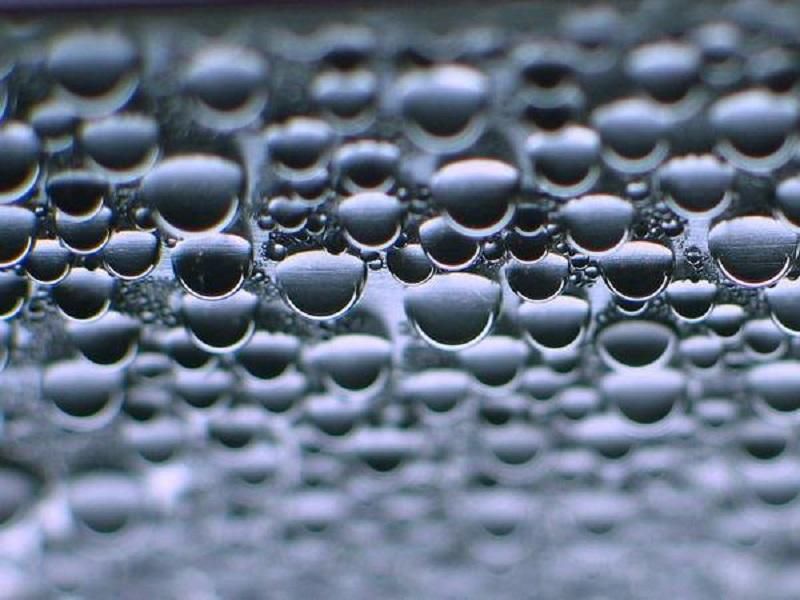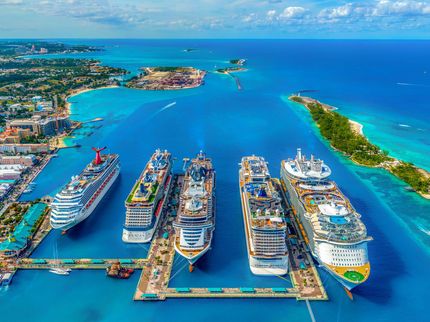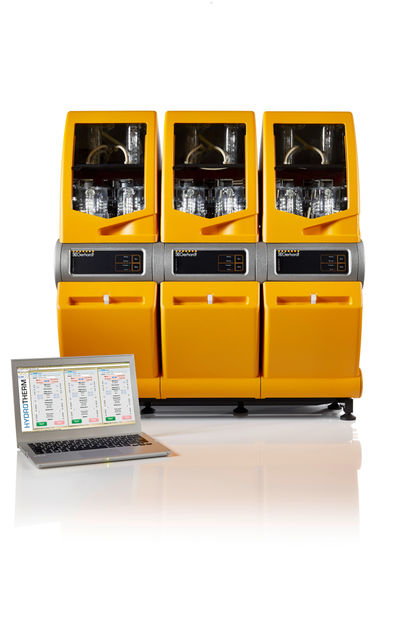New system based on protonated ceramic membranes produces hydrogen industrially
An international team publishes a system that generates this universal fuel with almost no waste
An international team involving the Institute of Chemical Technology (ITQ), a joint center of the Spanish National Research Council (CSIC) and the Polytechnic University of Valencia (UPV), has developed a new electrified reactor to obtain hydrogen in a more sustainable and energy-efficient way. This team has successfully combined 36 individual ceramic membranes in a scalable and modular generator that produces hydrogen from electricity and various fuels, with almost zero energy loss. This is the first time that this technology has been shown to produce hydrogen industrially.

Hydrogen is the most abundant chemical element on the planet.
Axel Rouvin
Hydrogen is the most abundant chemical element on the planet, but it is not available in any deposits. It must be obtained from other elements that contain it. Hydrogen production for energy purposes is classified by color according to how cleanly it is obtained. The cleanest is green hydrogen, which is produced from renewable energy sources. The most common is blue, which is extracted from natural gas. The results of the work in which the ITQ participates, published in Science, are promising for the competitiveness of both types in land and maritime transport, as well as for other markets and their industrial use.
The ceramic proton electrochemical reactors used in this study use electrical energy to extract hydrogen from other molecules with exceptional energy efficiency. The fuel can be ammonia, natural gas, biogas or other hydrogen-containing molecules. The project has made it possible to scale up an electrified reactor to a production of about half a kilo of pressurized hydrogen per day by electrocompression, with very high purity and maximum energy efficiency, above 90%.
The energy conversion and storage group of the ITQ has demonstrated that it is possible to work with this type of technology at 150 bar pressure, one of the most remarkable milestones of this work. Moreover, with this system the carbon dioxide (CO2) produced in the process is not emitted into the atmosphere, it is transformed into a pressurized stream for liquefaction and transport for subsequent use or storage, thus allowing decarbonization.
The results obtained in this work show for the first time that proton ceramic technology can be used to create scalable hydrogen devices that pave the way for industrial mass production. While other clean energies such as solar or wind are intermittent, hydrogen has the advantage of being able to store and distribute energy. "This system will make it possible to store energy in the form of high-energy density molecules with hydrogen content, providing an answer to the problem of the intermittency of renewable sources," says Sonia Remiro Buenamañana, a postdoctoral researcher at the ITQ.
In addition to ITQ, the research team includes scientific staff and engineers from the University of Oslo and the SINTEF research institute (Norway), as well as from CoorsTek Membrane Sciences, the research department of the CoorsTek company. "Energy efficiency is key to the future of hydrogen," says Irene Yuste, a chemical engineer at CoorsTek Membrane Sciences and a PhD student at the University of Oslo, who co-authored the study.
Obtaining hydrogen with maximum efficiency
"When energy is transformed from one form to another there is an energy loss," explains José Manuel Serra, CSIC research professor at ITQ and co-lead author of the paper. "With our protonated ceramic membranes we can combine distinct steps of hydrogen production into a single stage where the heat for catalytic hydrogen production is supplied by electrochemical gas separation to form a thermally balanced process. The result is hydrogen made with almost zero energy loss," he notes.
Ceramic proton membranes are electrochemical energy converters, as are batteries, fuel cells and electrolyzers. One of the keys to the breakthrough is a new component developed by CoorsTek Membrane Sciences from glass-ceramic and metallic materials, which combines the high-temperature robustness of a ceramic and the electronic conductivity of a metal.
These membranes operate at elevated temperatures, between 400 and 800 degrees Celsius, breaking down hydrogen into its subatomic particles (protons and electrons), and transporting the protons through a solid ceramic electrolyte. "Our research group has carried out an extensive study of the rates of the reactions that take place, as well as the mechanisms involved in them to improve the operating conditions of these systems," says Maria I. Valls Esteve, researcher at ITQ.
Note: This article has been translated using a computer system without human intervention. LUMITOS offers these automatic translations to present a wider range of current news. Since this article has been translated with automatic translation, it is possible that it contains errors in vocabulary, syntax or grammar. The original article in Spanish can be found here.
Original publication
Daniel Clark, Harald Malerød-Fjeld, Michael Budd, Irene Yuste-Tirados, Dustin Beeaff, Simen Aamodt, Kevin Nguyen, Luca Ansaloni, Thijs Peters, Per K. Vestre, Dimitrios K. Pappas, María I. Valls, Sonia Remiro-Buenamañana, Truls Norby, Tor S. Bjørheim, Jose M. Serra, Christian Kjølseth; "Single-step hydrogen production from NH3, CH4, and biogas in stacked proton ceramic reactors."; Science.






























































